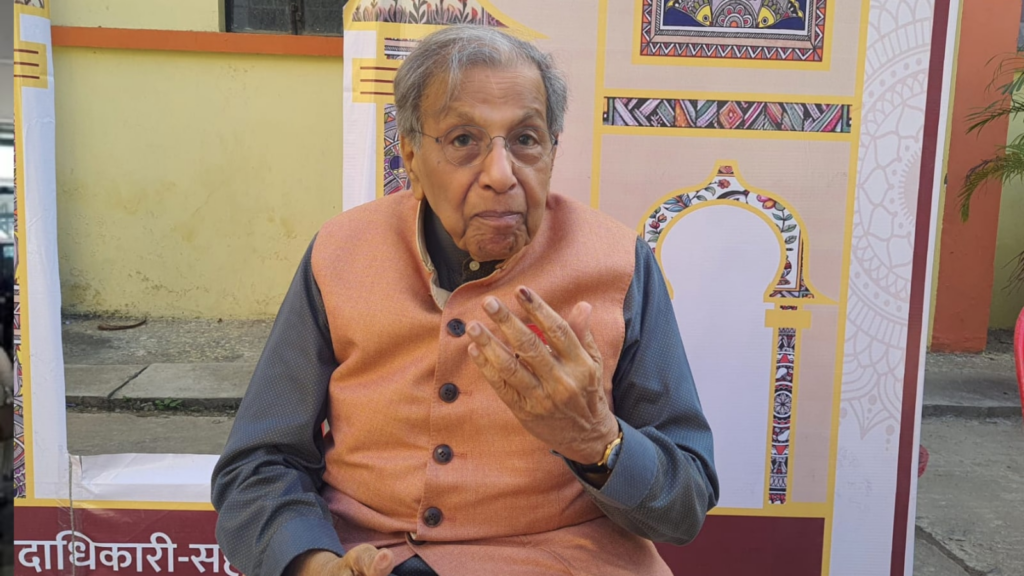As a bureaucrat, N K Singh had an eventful innings that saw him serve as secretary to Prime Minister Atal Bihari Vajpayee. After retiring, the 1964-batch IAS officer jumped into politics, serving as a Rajya Sabha MP from the Janata Dal (United) 2008 onwards before joining the BJP in 2014. Singh chaired the 15th Finance Commission.
In an interview, Singh discusses the challenges and potential of the Bihar economy, areas of unexplored growth, high tourism potential, freebies, unemployment, and migration. Excerpts:
What do you see happening in Bihar in the coming years in terms of economic growth?
The central vision must be to sustain the high economic growth the state has experienced in the last three years. I will give an example: for many years, the annual rate of GSDP (Gross State Domestic Product) growth veered around 4 or 4.1%. It changed a bit in 1990 and we witnessed a further shift post-2000. In the last three years, the state recorded extraordinary growth. Last year, the growth was about 23%.
Demography (population) was also brought under control. An average of 20% growth in GSDP would mean doubling of the economy in the coming five years. Bihar has achieved all this because of high infrastructural growth and high connectivity through roads, railways, and airports. The state has managed its macroeconomic finances very well. The state has a revenue surplus of 0.8% with a manageable fiscal deficit of around 3%. It has recorded a high rate of economic growth with macroeconomic stability.
But why didn’t Bihar witness any private investment when several other states benefited from liberalisation in 1991?
Bihar did not attract any private capital investment post-1990, either domestic or foreign investment. But now that there has been political stability in the state and there has been the same set of government at the Centre and state with similar ideological preferences, the state is now ready for private investment. It is important for its bureaucrats to rise above the status quoist attitude and set an annual monitorable target of private capital investment in each department.
What could be potential areas of such investment?
I can cite the example of Cambodia, which thrived on the tourism economy of its Angkor Wat temple. Angkor Wat is nothing but a replication of the Ramayana. Bihar has multiple Angkor Wats. The state has to capitalise on its vast potential of tourism sectors such as the Ramayana, Buddhist, and Jain circuits. The connected hospitality and service sectors also have to grow along with continued infrastructural growth. One often talks about Bihar’s dependence on agriculture, but the secondary and tertiary sectors have shown annual growth of 28%.
What about the agro-based sector, hence largely untapped?
The food processing and agro-based sector has huge untapped potential. The Makhana Board is just one pilot project. The vegetables sector has tremendous potential. We used to be an importer of fish, but we are exporting fish now. Fish, potato, tomato, banana, mango, and corn have astronomical growth potential. Corn, in particular, can be one big sector. Food processing in the state has a great future.
What can be done to alleviate the problems caused by recurrent floods and droughts?
Several countries have brought in private investment in agriculture and the wide use of technology. We need to change agricultural practices to enhance farmers’ income. We have to learn how to use water more economically. Punjab has moved from wheat and rice to fruits and vegetables. We need to harness water and look for ways to make the most of agricultural land. Unlike others, we do not suffer from water deficit.
How do you view the politics of doles that goes on in election season, with the government announcing a slew of schemes and the Opposition promising a bunch of its own?
There are two kinds of freebies and subsidies: merit-based freebies and non-merit-based freebies. Subsidising teacher training and higher education can be an example of merit-based subsidy. When Tamil Nadu started the midday meal scheme, people called it a freebie, but it turned out to be a merit-based freebie as it went on to improve nutrition among children. But cash doles are non-merit freebies. The late Arun Jaitley, when contesting the Lok Sabha polls from Amritsar, shared his grouse of competitive populism and said his political rivals were handing out consumables such as ghee.
There has been talk of migration during the current campaign season. What is your stand on this
There are two kinds of migrations: forced and out of one’s own will. There has been forced migration in Bihar to get better education and earn a livelihood. This is called a push factor in migration. But there is a pull factor that means people leave to better their quality of life. As per a recent report, about 52% of households in Bihar receive an average of Rs 35,000 (annually) in remittance. Just as India is the biggest remittance economy in the world, Bihar is the biggest remittance economy in the country.
Why hasn’t Bihar been able to create enough jobs? What must the party that comes to power do on this front?
Enhancing growth rate is a necessary but not sufficient condition for job creation. Sustaining the current pace of economic expansion requires renewed focus on labour-intensive industries such as footwear and garments. Tourism, too, is a powerful job multiplier; few other sectors offer such high employment potential with such low capital intensity. To unlock this potential, Bihar must also deepen skilling capacity to ensure that its demographic dividend becomes a productive workforce rather than a missed opportunity.
Urban development through new industrial-township zones, supported by reliable infrastructure and enhanced female workforce participation, can further reinforce the relationship between capital investment, output, and employment.

